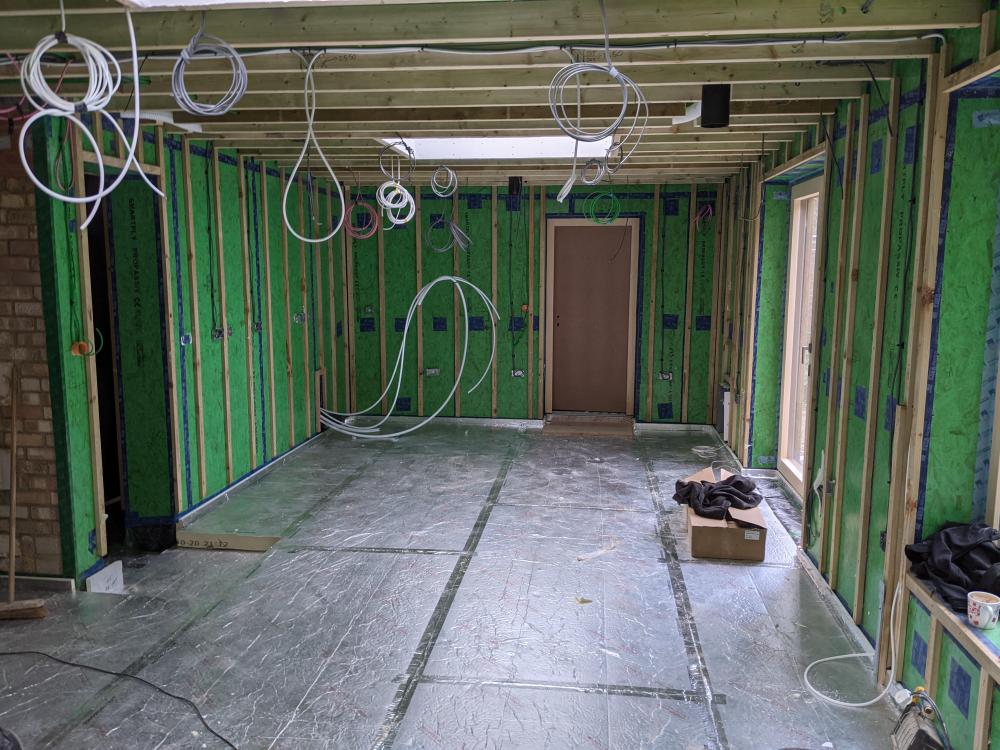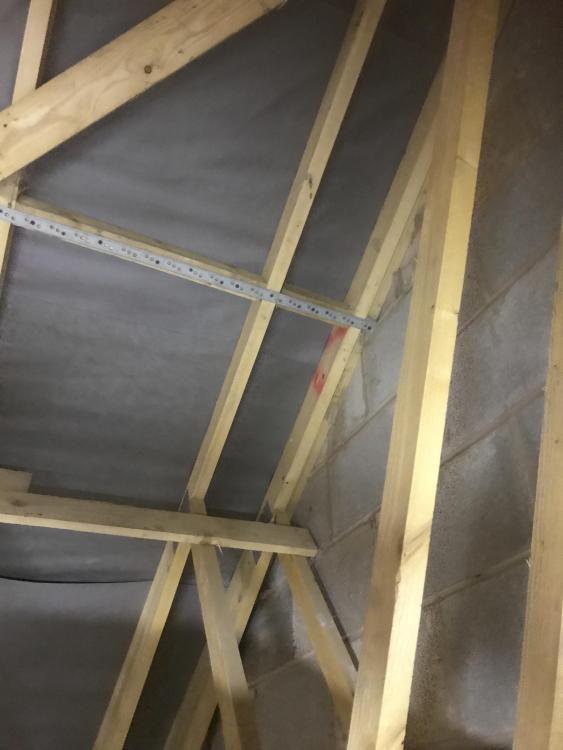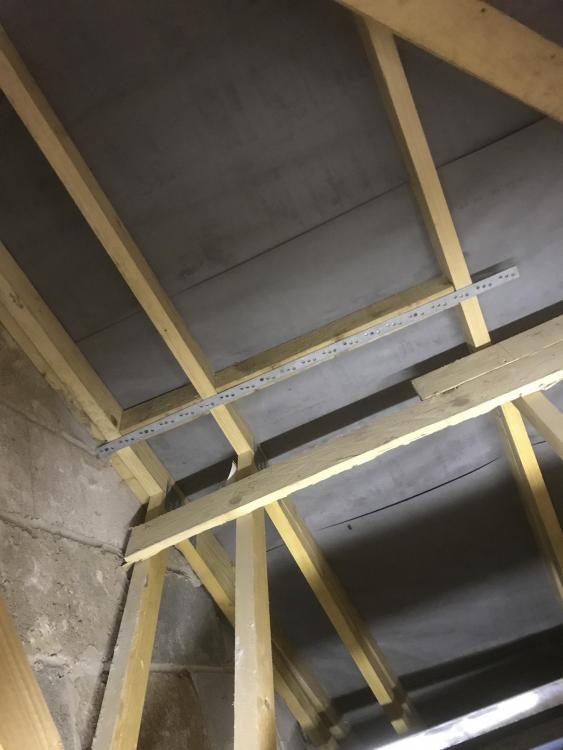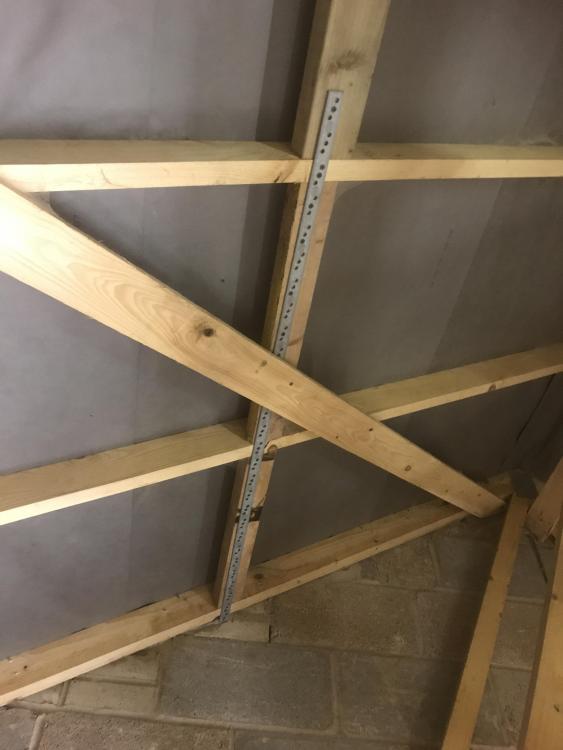Leaderboard
Popular Content
Showing content with the highest reputation on 10/22/20 in all areas
-
4 points
-
I pay more in standing charges. And that is before taxes on it. Fuel poverty is a myth, water poverty is the financial killer. I am now going to drive my car to town, get a coffee and complain that the world is not as good as it used to be. That will probably cost me a tenner in all. (we are so lucky in the UK that we still have choices, some are good ones, some a bit silly)3 points
-
In our case: - We had a surveroy set out foundation position. - MBC then measured drainage position from foundation edge based on drainage drawing provided by designer. Same with all ther other duct penetrations.2 points
-
The isolation valves pictured are in @Ferdinandhouse so I doubt they will stop much water coming out of @newhomes shower. If the shower doesn't have isolators which is more than likely you might get away with turning the water off at the mains while you do what @Big Jimbo suggested. But while you have the washer out measure it and order a new one as turning it round will only be a temporary fix.2 points
-
I once had a client who decided not to appoint me for site inspection work, I happened to be passing the site one day and went for a nosey... the builder had decided, instead of my nicely detailed warm roof, that he would put 50mm insulation on top of the deck and 100mm under it because he didn't want to get the profiled facia pressed and this would "look just the same" I told the client that you can't really do that as you can end up with serious problems, and I'm 100% sure the client didn't believe me and thought I was just being a picky architect in a huff because they were going to ruin the look of the building. Luckily he did some googling into the problems with hybrid construction and called me the next day to apologise! then made the builders take off the roof finish and built it properly! (they still made the roof verge detail absolutely awful right enough!) If they can't read the drawings well enough to build a warm roof, I'm not sure I'd really trust they could be careful enough with a membrane installation!2 points
-
Reading your questions made me wonder if you were confusing MVHR with ASHPs, but given you've mentioned both I'm not so sure. Suffice to say though; don't mix up MVHR with heating/cooling. MVHR is an approach to providing ventilation and whilst it does so in a way that minimises losses through heat recovery it is no substitute for heating/cooling as the air flow volumes are so low it has very little effect. Don't get me wrong, I think it is great and would definitely recommend it (I retrofitted a system here and so in answer to Q8 I can confirm it is *definitely* DIYable and would be even easier in a new build).2 points
-
at last got a reply to my pre planning -which is basically positive with lots of hoops to jump through but at least we can now start to make plans so maybe i won,t need to include plans for my tomb after all1 point
-
Yes we did, from Lathams. There was a bit of a last minute flub up with it. I thought it comes in inward opening only, but when ordering our contractor saw it has outward opening too which is more convenient to use so we swapped to that (with out PH designer's blessing). But ... this means the airtightness boundary has to pass under and through the threshold to the seal on the outside face rather than being on the inside, which our joiner was really unimpressed by and called the whole door a piece of overpriced rubbish which obviously smarts a bit after putting that much down on it. (Same feelings with the cost:quality of the petwalk door, for slightly different design shortcoming reasons). So anyway if doing this again I'd keep with the inward opening door. I now really understand why passive houses prefer inward doors. It's all about the thresholds, stupid. (Well, I guess houses with airtightness boundary on the outside of the walls would prefer outward doors?) Getting an insulated fire proof door is easy: just glue a shedload of cellotex to a cheap FD60 door and have your thermal consultant knock up an installed U-value for the result. Seen a couple houses do that. The key thing about the Moralt passive rated door is the airtightness rating. Does Ferro Firesafe have that? But also, see my comments above..... :-/ Yeah.... it is a full doorset. It doesn't have a the eurolock cylinder nor door handle, again to my joiner's disgust, and the lock mechanism that came with it is currently removed as he was struggling to get the spring to fire reliably. I'm like sure, "add it to the snagging list". Attached is the only photo I have of it.1 point
-
Edge shots! happens (with air guns) a lot when you are holding the trigger and bounce nailing. get too close to the edge and they go straight through. We were trebling up some trusses on trestles when my brother got a rebound from thge floor and embedded a couple of inches into his A*&e cheek. Really funny watching someone pull a 4" annular ring nail out with a claw hammer.1 point
-
1 point
-
I forgot to "follow" my own thread and missed this. Apologies for confusion, it spent most of the show looking at all-in-one systems that had MVHR & ASHP but do appreciate they do different jobs.1 point
-
1 point
-
1 point
-
1 point
-
1 point
-
and that warm fuzzy feeling is worth more than any ROI or financial repayment period etc1 point
-
Yep . From 3% now at 18% So tonight when I’m not on site should be pretty much self sufficient! . It makes me happy to know I’m saving the planet ?1 point
-
“Tesla Powerwall and solar can work great with 3 phase but im not sure exactly about using the new Tariff with it as I believe they state that it is only for residential customers. Aware that some people have 3 phase at home but im not sure if the smart meters are available yet? Will try and find out and let you know. “1 point
-
1 point
-
assuming you mean aircrete? celcon/thermalite type blocks? They will need rendering minimum, otherwise water will penetrate and frost could get to them over the years. Can you not ask neighbour if you can remove fence to sort, and then put it back again at your own cost?1 point
-
@Thorfun ; got the news - it wasn’t particularly exciting ! . It’s kind of what I already new but now ‘official’ , The Tesla tariff . with pv , battery and Tesla EV 8p/kw import and export with no Tesla EV 11p/kw no standing charge . It simplifies things and currently seems like the best deal on the market - so for now I’m going to go with that ! Makes it set n forget for old codgers like @Nickfromwales ? ; and other Android owners1 point
-
I painted my garage floor with single pack paint. It hadn't been painted since it was laid and luckily had no oil staining etc. I knocked off all the laitance with a cup brush on a grinder then vacuumed it with the shop vac...then vacuumed it again. A messy, dusty job but we'll worth the effort. I had a fair bit of various shades of grey floor paint, some bought, some full, some half and scored off sites, all different makes. All went into an old 5gal brewing barrel and got mixed with a stick. Applied with a cheap plastic broom. Done 10 years ago probably and all good.1 point
-
No Council tax poverty is the killer. Is there anyone here who does NOT pay a LOT more for their council tax than they do for fuel and water combined?1 point
-
I used a high-build epoxy paint product. Can recommend the guys at Promain - excellent advice. If you're going to spend a lot on epoxy (and it's way more expensive than regular floor paint), you need to make sure you get the prep right. We had really bad spalling in places, so I rented a floor grinder. It was very expensive due to the amount of wear I put on the diamond pads, and that was without taking it all the way back to perfectly smooth. I doubt I'd take that approach if I were doing it again. I really liked the idea of one of the epoxy self-levelling products to build up a thicker coat, but it was expensive, and I was worried about having to mix and lay it while keeping a wet edge (etc). Given how much the grinding cost, however, I think it might actually have been cheaper to go this way, and the result would almost certainly have been better. While the high build product I used did iron out the finer imperfections, it doesn't really do much for deeper marks. You can still clearly see tamp marks in places where I wasn't able to grind them completely off, for example.1 point
-
That is to do with reducing attenuation. Which is another factor in sound propagation. It is why there is a large reducing in sound levels between 1 m and 2 m away, the surface area of the 'sphere of sound' is greatly increased, which reduces the energy per unit area. Realistically, any half decent ASHP is not going to make much noise. @joe90's air blower for his sewage was a bigger problem.1 point
-
I ran 32mm mdpe water pipe in 80mm duct, it allowed for insulation around the pipe at the point it comes up through floor, you will pull 25mm in with your eyes closed. 110mm underslab, don’t run small 40-50mm under there.1 point
-
This is the biggest problem. It is why I don't have PV, and ASHP and a Sunamp. Just not worth it for my usage. Using an inch less water in the bath gives me a bigger saving than all that, but that is partly because my water costs me more than the price of heating it.1 point
-
The question then is how much less you’re using ( over the warranty period of the purchased equipment ) and hopefully you will at least break even at that point. That’s not a requirement though, as there is another factor to apply to that equation; Sticking two fingers in the face of the big 6 has a LOT of people looking the other way when the numbers are being reviewed / purchase considered. Plus the heart always rules the head. ?1 point
-
That's because they don't look at data. Once cleaned up that data should give you a pretty decent idea of what is happening at different times of the day. Then you could change behaviour to optimise the storage i.e. if little solar stored during the day, go out that night to a friend's house. Generally what happens is that you will use less energy overall, which makes the system seem to perform better.1 point
-
Good photos Nod. You can see from Nod's photos how the metal straps & noggings (dwangs in Scotland) are installed so that when the wind sucks out the gable wall the load is resisted by the trusses, roof structure acting together. The roof acts like a deep beam and this holds the gable wall in place. There is easy to find guidance on this from say the NHBC details online. The same rules apply at ceiling level unless the wall has been designed on the basis of floor to ridge height. I think Epsilon has spotted this. Good example Nod of a job well done. You can see from Nod's photos how the diagonal wind bracing has been carefully cut where it meets the blockwork. By doing this Nod has ensured that the end distance for the nails has been maintained..in other words if a nail is too close to the end or edge of a timber it is no good. You can also see how Nod has placed the bracing close to the node points of the trusses as per good practice etc.1 point
-
Possible i'd guess but will now be left with previous holes....whats annoying is that on the inside the handle IS very much like that one on the garage personnel door, but Horman don't offer it for external of Thermo65. Yes, I spent months chasing matching Garage and house door...who would think it should be so difficult. To me my 'near miss' is worse than intentionally distinctly different colours.1 point
-
1 point
-
If you're going to tile the floor later don't use PVA. Use SBR. If water gets under the tiles it'll soften the PVA and the tiles can lift.1 point
-
68mm Ferro Firesafe EI30 (assuming you need 30min fire door). U-value I was quoted for the whole doorset was 1.02 vs. 0.76 for the passive version.1 point
-
1 point
-
I have no professional knowledge so couldn’t recommend anything. However, I just used a fairly weak solution of about 4:1... I chose this as 3:1 is the recommendation for bare plaster walls, so figured a little less would be about right.1 point
-
Overall it went swimmingly well, couple of minor issues but soon resolved and need to return to sort out a handle issue but John Knight Glass were, IMO really great and for final sign off we wait for contact over next couple weeks when someone else comes to site to check everything with us so enough time to raise any snagging issues hopefully. Despite some panic on the canal bridge when the trailer was about 8 inches off the floor, everyone held their breath when the glass got over successfully. The other option being discussed was asking CRT who were dredging at the time to transport them to us. Although that didn't happen, I'd of been quite pleased to see that ? The windows we picked were the aluclad UPVV studio KF320 windows and KS430 sliding door and we are more than happy with them. A couple from work in progress. It was nice as the sun was setting getting some pictures of the house today, finally with the windows.1 point
-
I sleeved MVHR prior to pour. Everything else has been drilled through after. If you can, design out waste pipes going through the exterior wall and send them all down through the slab. Insulated raft for foundation, works really well with ICF Blocks arrived 26/03/19, first pour 29/04/19 to 2.8m. Just me. Also working day job 50% of the time. So 18 days for groundfloor 88m2. Yes you've got it. Vertical rebar for any retaining walls Potentially for UK too. I think it makes it more economical to buy a standard ICF product then add additional insulation. And cutting 200mm ICF blocks is a no fun. Didnt even consider ICF for the internals, too costly, waste of insulation. I went with 100mm concrete block. Yes pole plate with bolts cast into the concrete. If I was doing it again I think I would drill and resin. Fixing a pole plate to EPS and then pouring concrete behind resulted in a little more movement than I was happy with. Has been made good now but was a bit of effort.1 point
-
2. You'll want to be going through to the concrete for anything like kitchen cabinets, TV, heavy shelving etc. The plastic webs in poly off are evenly spaced and easy to find. 3. If you know EXACTLY where you're services will be going through, then yes, stick a bit of ducting in pre pour. I did this for electric and water, but not for my MVHR or ASHP pipes as they are not confirmed yet. Otherwise, you'll be core drilling after the pour, but in exactly the right spot. 4. Your foundation system will depend on your ground conditions and the engineer's preferred design. We did a concrete raft and ICF started directly on this. Same can be done for trench founds, speeds things up and reduces cold bridging. 5. our builder needed a full week for our 100m2 footprint. 6. Rebar and concrete mix will be determined by your engineer. Our build needed 2 verticle rows of 10mm bar every 200mm in the basement, and 1 row of 10mm bar every 400mm for the rest of the building. 10mm lateral bars every 1200mm. Each openings requirements will depend on the spans and imposed loadings. E.g we have a floating corner that needs 32mm bar! 8. We're adding an additional 50mm insulation to our standard Amvic blocks to get to u0.15 for passive House standards. It's far easier and cheaper to add PIR insulation to the inside of the walls rather than EPS to the outside. Can be done DIY over a weekend. Whereas external requires scaffolding, thicker sheets of EPS and lots and lots of big screws. You just need to factor in this loss of space in your design. 9. Using ICF for internal walls eats up a huge amount of space (e.g. 280mm Vs 100mm) compared to single block or stud walls. And costs a lot more. Bit it is faster and DIY able. One thing I would add, if you are doing this DIY, advise you to try and visit a build where it is happening. Also, you'll need to get your own structural warranty organised of not using a contractor. Factor in another £3k for that.1 point
-
I agree with all the above, the mantra here is insulation insulation insulation, fabric first approach, you only buy insulation once, all other things either have a life or need constant spend (electricity etc). My build is not to Passive spec but passive esc, in other words loads of insulation and attention to detail re airtightness. I have a small 5kW ASHP and MVHR, both bought through EBay and self installed, not rocket science. I too have UFH downstairs and only towel rads and electric UFH In bathrooms, no heating at all in bedrooms as the whole house is a constant temp. re question 9, like others here with an ASHP I only heat DHW to 48’, most gas boilers are 60’ ish the standing losses from a hot water tank are much less when stored at this temp, it’s also too hot to hold your hand under (washing up) and bath /showers more than hot enough BUT, you will blend down the water less so the DHW tank needs to be larger.1 point
-
MVHRs sole job is to maintain air quality, whilst recovering some heat from the exhaust air. There's no need to have MVHR and heating "talk" to each other. Yes, there are some MVHRs out there that have integrated heat pumps and can heat domestic hot water and heat/cool incoming air. But as others have said, unless you are building a passive House with minimal heat load, these will struggle to distribute heat. I think the max realistic heat you can distribute through air is about 2kw. The peak heat load for my house is 2.5kw, so I can't reliable heat my house this way. Plus, you have to have higher air flow rates which often equals more noise. And when I did the sums, the likes of the Nilan compact P with ASHP was coming out nearly double the cost of a separate ASHP and MVHR. If you go for a standard MVHR like a vent axia sentinal or a Zehnder Q series, and a separate monoblock ASHP, you should be able to do 90% of the install of both systems yourself. This is what I'm doing in my ICF passive House. My current estimate is about £12k for self install of both systems including DHW tank, ufh, but excluding commissioning. Ashps can get hot water tonl 50c + ... Tho most here seem happy with 45c. Be aware there are lots of companies and people jumping on the MVHR bandwagon with limited expertise and will say anything to make a sale. It's like the double glazing boom of the 90s. What ever way you go, your number one priority should be maximising insulation and air tightness. You can then spend a lot less on heating. I recommend you look up the passive House standards of you want a very low energy home.1 point
-
We used Durisol and braced the corners and vertically ever couple of meters. I didn't have the bottle to pour the maximum height suggested by dursol and generally poured ever 1.5m - 2m.The openings are a simple box around the opening we used scaffold boards with props in the centre. We used batons inside to allow for service voids. I think it will take you just as long to trace the walls for cables etc but could be wrong. The block is very easy to attach onto with wood screws. Ours went through the foundations. We had to core some small holes for the air source and lighting cables but this again was pretty simple. I felt it was easier to drill the block rather than try to allow holes through beforehand. We started the ICF build in Mid / Late Aug 2019 and completed the last pour in middle of Nov. This was myself and a mate who worked full time and had about two week annual leave. The house is 18m x 8m (ground and first floor). Due to me being close to a MOD site we had specialist blast loadings applied to the house (not through choice) which meant we had to have rebar 250mm centres horizontally and vertically around the whole external walls. This was onto of the rebar used within the lintels. Our internal walls downstairs are durisol which we poured at the same time as the external walls. Originally the engineer had them planned for the upstairs walls (not sure if durisol were giving him a little bung) but these were changed to timber partitions as easier and quicker to install. Wall plate as you said with the plate installed prepour and the concrete setting around them.1 point
-
MVHR is about providing fresh air into a building without wasting the heat from extracted stale air. It is not on it's own a heating system, though some mvhr units are available with a heating function. I think that is what you are talking about? So your house won't heat itself. MVHR is one ingredient to making a low energy house. Having said that. we have UFH downstairs, but upstairs only in the 2 bathrooms. We find we don't need heating upstairs because that does okay with what creeps up from downstairs. Most of that will be via the centrally positioned stairwell. As part of your design process you should get a SAP assesment done that will tell you the heating requirements of the house.1 point
-
yep. as MJNewton said, MVHR is not a heating/dhw system! although it can be used for a bit of heating/cooling (from the reading I've done on here a few have a system that does a little heating/cooling) it is no substitute for a gas boiler or ASHP as a primary heating/dhw supplier. take a read through the MVHR forum and ASHP forums for load more information on both subjects.1 point
-
just a quick post to share some of my issues which in hindsight are entirely self inflicted, hopefully this will help others not to make the same mistakes. 1. Put your waterpipe in the duct from the outset, soo much easier than pulling it through later. (I did consider it but dismissed it as wasn't sure exactly where my duct was going to come up at the time) - don't be like me! I tried pushing 30 odd metres of mdpe through a 63mm duct, got 25m through then nothing. I dug two holes to find it, ended up having to attach rope to car - not gonna lie, it was a griz and I was hating life. 2. When laying your hardcore sub-base for an insulated slab do the foul drain runs at the same time. I was under time pressure to get ready for concrete so I just left stubs poking out to connect to later - dont do it, I've made life so much harder for myself having to dig through hardcore to do it. 3. If you ignore no.2 and just leave stubs make sure you leave a good length - i didn't! The stubs i left only just poke out from under the slab, god only knows why I did this. I have spent all day yesterday and today digging them out so I can put an extension length on to bring them out to roughly where the ICs will be. Digging through the hardcore really sucks ass. Yesterday wasnt too bad, today was on another level. The trench kept collapsing in on itself and my 600mm trench ended up about 1.5m wide - a very bad day today. Dont be a plonker like me. I've made other rookie errors so far but fairly painless. These have been a right PITA.1 point
-
If your having your UFH in the slab just make sure that the subbase is bang on for grade so that your slab is a continuous thickness. Make sure mesh is used and packed up on concrete bar spacers (They wont squash down/collapse in areas like with plastic spacers, which will ensure your UFH pipes are at a constant depth). Make sure you have contraction joints in all the right places once the slabs in or you'll end up with random cracking. If you want a really shiny finish then make sure sealer is applied shortly after power floating.1 point









.jpg.c21f3ac78c9b7efd90cbdcb312744dc5.thumb.jpg.7adcad4c0e384f5ecd7d56b0618df6e5.jpg)







